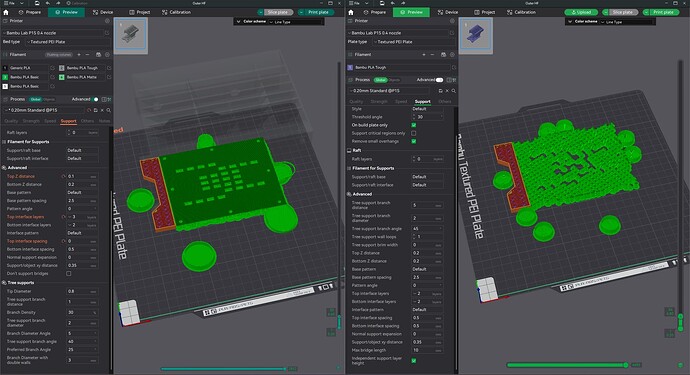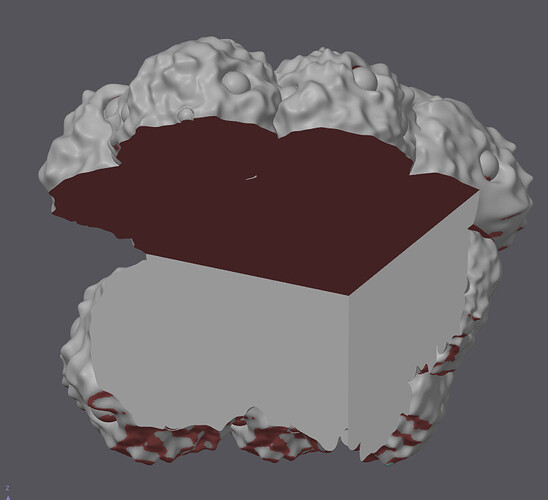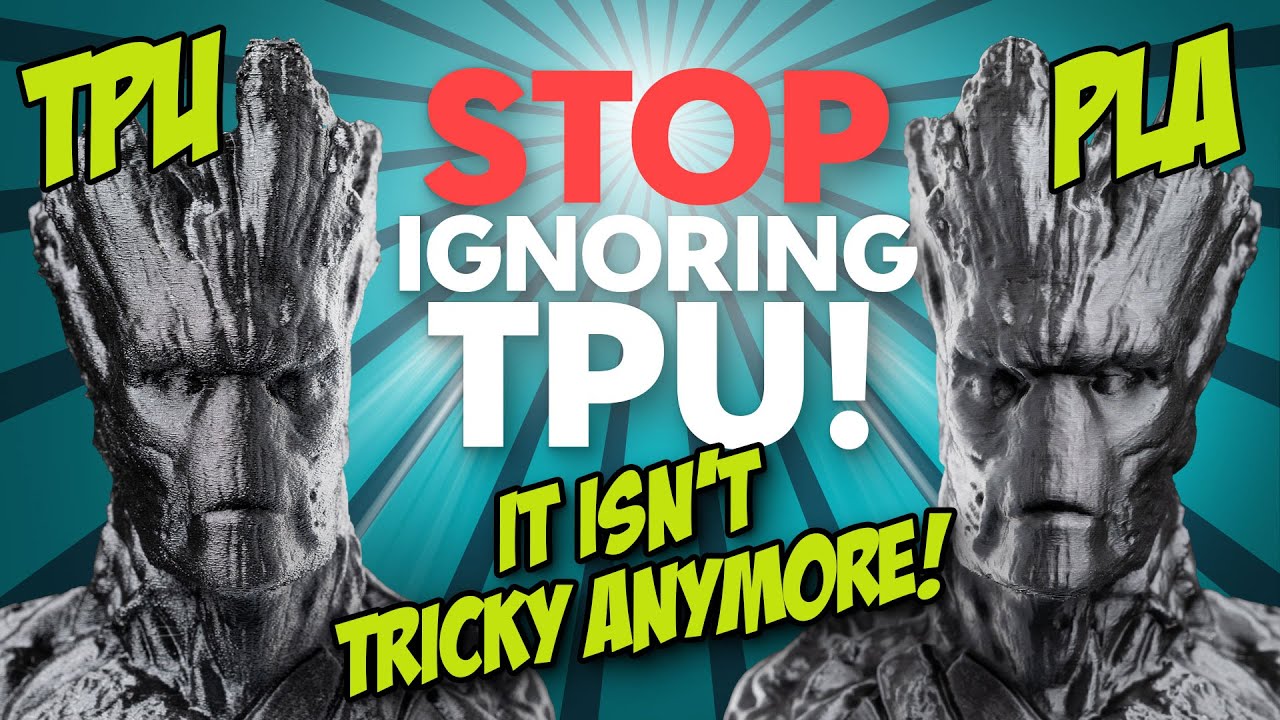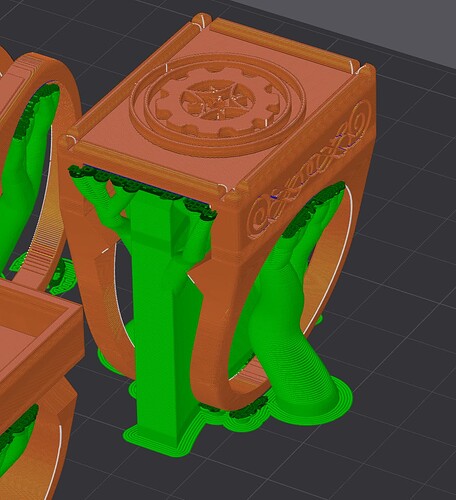Does anyone know if you can add normal and tree supports for the same model? I have some use cases where this would save on filament, reduce the print time, and improve the quality of my prints. I have searched the forum and had a look online but there doesn’t seem to be any mention of it
You can manually add classic supports or manually add tree supports, but not both in one slice.
Sorry, I meant normal and tree supports. It looks like this isn’t possible. Would you say it was a valid feature request?
Just edited original post
I’ve been trying to think of a use case where I would want to mix and where one or the other wouldn’t be sufficient. I recently had a model that incorporated both organic and geometric details (like screw bosses, gussets, snaps, etc.) and I had great success with just tree supports. What would be your example?
Sorry deleted the post because I would like to spend more time on my explanation
I saw your model. In this case, it is really more geometric than organic. The tree supports may be faster, but that overhang might not come out great. You would want to make sure you keep your branch spacing tight to even have a chance. looks like you did have it fairly tight. For easy removal, add .02 to z distance from model from whatever your default is (mine is usually .2 so I make it .22). I like letting the trucks be slim so no infill. That helps on time.
So, your other option is to build custom support and then just do tree support in the slicer program. While I see what you are wanting to achieve with combo supports, I think maybe the real answer is to make the classic supports work better for you in this case. I can’t see how the slicer would automatically know where which type of support should go so, if you did request this it would have to be all manually selected. At that point, wouldn’t your own custom support be faster anyway?
Yes I agree, the model is more suited to normal supports but it pains me when I see the time and filament saved, plus not having to add supports onto the model because more than often they appear in thin air and it looks like you need a support for a support if you get my meaning.
However, I have found a solution, tree, or organic supports in Orca Slicer.
Orca slicer adds support interface layers instead of caps to the branches before the first layer, just like you would expect with normal supports ( Maybe BS does this but it isn’t the default and I haven’t found a setting to change it).
I know the image attached is overkill ( just an example) but this does give me all the options needed to print the model without creating a custom or using normal supports and gives me the option to print the raft interface in PETG for a clean accurate finish. Hopefully, BS will get there one day but Orca Slicer has some better options over BS.
Thanks for your input and taking the time to reply.
Thanks for your tip. I’ll check out this option!
If you place two copies of the same part and exactly align them, you can set each one to have different types of supports. You can then use support blockers on each to get different types.
I’ve not actually tried printing this way, but it works in Bambu Studio at least according to the preview.
Here’s a case where I’d like to use Normal + Tree supports on the same model. This is an organic blob of “fungus” that has had an internal corner cut out of it so that it can sit on the corner of a box. I’d like to use Tree supports for the organic fungus parts and Normal supports for the big flat surface.
instead of using supports consider this:
(timestamp: 8 minutes, 4 seconds).
I know its TPU but it applies to all filaments. By setting an extremely low “fuzzy skin” (i use 0.05 or something, i think he uses 0.1) value the extremely tiny zig-zag motion enables you to print very organic overhangs without any supports at all.
That’s very interesting. I don’t know that it quite solves this particular model because I need some reasonable surface to adhere to the build plate and this model has no external flat surfaces to do that and would thus need some kind of supports at the bottom.
But it’s possible that support painting at the bottom, combined with this fuzzy skin approach higher up, might help.
I still think the Slicer allowing you to paint on Tree support areas and Normal support areas independently would be a valuable feature.
Oh yes absolutely and I’ve never really been sure why it isn’t an option.
Not sure how, but I seem to have accidentally gotten a mix of normal and tree support behaviour in this file after wondering if this was possible for a long time, I’m wondering if it’s possible to replicate on other models
You may have set the support type to Hybrid.



